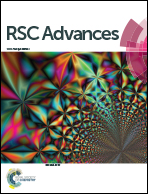Dissolved organic matter in urban stormwater runoff at three typical regions in Beijing: chemical composition, structural characterization and source identification†
Abstract
In this work, DOM was extracted from urban stormwater runoff samples collected at three typical regions (business, residential and campus regions) in Beijing, China. A comparison between the chemical characteristics of DOM extracted from these three regions was performed using UV-visible spectrometry (UV-vis), excitation–emission matrix (EEM) fluorescence, proton nuclear magnetic resonance spectroscopy (1H NMR) and ultra-performance liquid chromatography quadrupole time-of-flight mass spectrometry (UHPLC-Q-TOF-MS). The UV-vis and EEM spectra revealed that the DOM in stormwater runoff samples mainly contained UV humic-like (peak A) compositions with higher molecular weights. 1H NMR analysis indicated that the DOM of the three regions contained a similar distribution of functional groups, which mainly consisted of aliphatic chains and aromatic components with carbonyl, hydroxyl or alkyl terminal groups. And the UHPLC-Q-TOF-MS demonstrated the identification and characterization of possible compounds existing in the DOM. Further studies should focus on the interactive relationship between DOM and the co-existing contaminants (heavy metals and some typical organic pollutants) in stormwater runoff.


 Please wait while we load your content...
Please wait while we load your content...